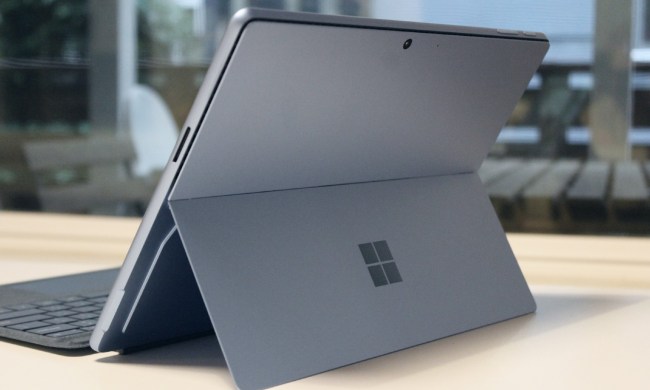“Logitech's team has come up with one of the easiest methods of programming a remote control that we've ever encountered.”
- Excellent touch-screen; easily programmable; replaces multiple remotes; very comfortable to use
- Expensive; very short battery life; doesn't support Bluetooth; telephone tech support expires after 60 days
Summary
With a price tag one penny shy of 500 clams (you can buy it online for less), there’s no denying that Logitech’s Harmony 1100 Universal Remote is pricey, until you compare it with touch-screen remote controls from companies such as Crestron and AMX, which cost several times more.
Those systems justify their cringe-worthy price tags by offering even many more bells and whistles than the Harmony 1100, but they also require professional installers to set them up and to teach you how to use them. Logitech’s device is ostensibly user programmable: All you need is a USB cable and a PC connected to the Internet. Still, we were happy that there was no waiting on the telephone tech support line on the weekday afternoon we set up our evaluation unit, because all is not always as harmonious with this remote as it should be.

All Harmony remotes are designed to control any device that uses an infrared interface, but the Harmony 1100 boats a 3.5-inch color touch-screen in addition to several hard-wired buttons for functions such as volume control and changing channels. Logitech’s Harmony team has come up with one of the easiest methods of programming a remote control that we’ve ever encountered: Instead of pressing arcane code sequences or painstakingly copying functions from several other remotes one button, you simply plug the Harmony 1100 into your PC’s USB port, log onto Logitech’s website, and input the manufacturer and model number of each piece of equipment in your entertainment center. Logitech’s software will then download the appropriate codes from the company’s comprehensive database.
The final step is to create activities, such as “Watch TV,” “Listen to CD,” Watch a DVD,” or “Listen to Radio.” The software walks you through the process by asking a series of multiple-choice questions. If you want to set up a television-watching activity, for instance, the software will ask which device you use to change channels, which one you use to display video, which one controls the volume, and which settings each of the devices should use to enable them to perform the task at hand.


The software allows you to program any of the remote’s buttons—both the ones in hardware and the ones on the screen—to perform any function your hardware is capable of. You can even create buttons with custom logos for your favorite TV networks and premium channels. The Harmony 1100 is limited to controlling infrared devices out of the box; but if you add Logitech’s RF extender (for another hundred bucks), you eliminate the line-of-sight requirement and add the capacity to manage devices that operate on radio commands, including devices that utilize the Z-Wave protocol to control lighting, operate motorized window shades, and so on.

As for that $500 price tag, we have to believe that a good chunk of it goes toward paying the salaries of the tech-support folks who help consumers program the odd piece of gear that refuses to cooperate with Harmony’s software. Programming the Harmony 1100 to control our A/V receiver was a snap, but we couldn’t manage to bring our Dish Network satellite tuner to heel without calling Logitech’s help. We called their toll-free number—just as any consumer would—and waited no more than 30 seconds to speak with a knowledgeable human being. After 90 minutes of twiddling, they realized that the problem was with the satellite tuner, not the remote: The tuner was “watching” a different IR channel than the one the remote was using.
Since all your remote’s settings are stored in a database on Logitech’s website, their tech-support people can change any of its settings and then have you download the new instructions to the remote using the USB connection and test it to make sure it works—before you hang up. If the remote ever loses its settings, you can download and restore them in seconds.
Be aware, however, that your access to this excellent telephone tech support is cut off 60 days after you’ve created your account on Logitech’s site. After that, you’ll have to rely on the skimpy user manual, Logitech’s website (for a user forum and a FAQ), and email.

- Controls everything
- Easy to program
- Beautiful touch-screen
- Great tech support
Cons:
- Short battery life
- Telephone tech support limited to 60 days
- No Bluetooth support
- RF extender adds $100 to an already high price tag



